| Strain Name |
C57BL/6-Glp1rtm1(GLP1R)Bcgen Gcgrtm1(GCGR)Bcgen/Bcgen
|
Common Name | B-hGLP1R/hGCGR mice |
| Background | C57BL/6 | Catalog number | 121837 |
| Aliases |
GLP-1; GLP-1R; GLP-1-R GGR; GL-R |
||
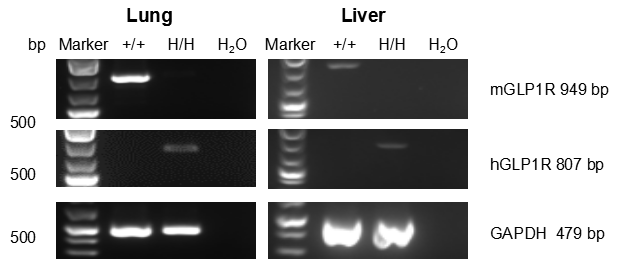
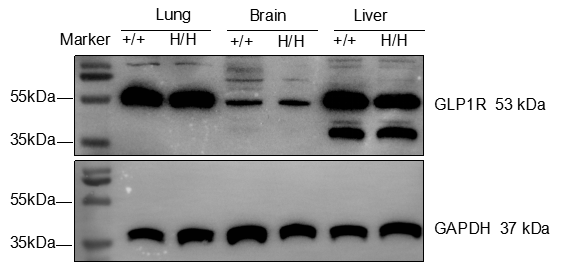
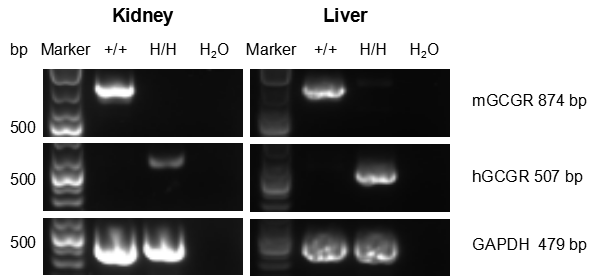
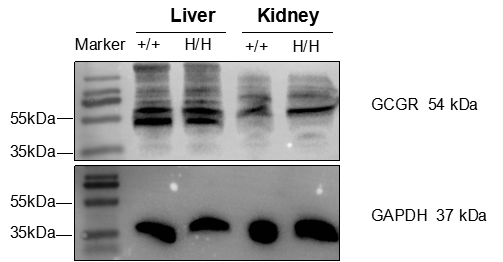
GCGR expression analysis in wild-type mice and B-hGLP1R/hGCGR mice by western blotting. GCGR protein was detectable in the kidney and liver of wild-type mice (+/+) and homozygous B-hGLP1R/hGCGR mice (H/H). As for the antibody used in the experiments have cross reaction between human and mouse, mRNA data should be considered. For mouse Gcgr mRNA was not expressed anymore, it’s predicted that the expressed protein in B-hGLP1R/hGCGR mice was human GCGR.
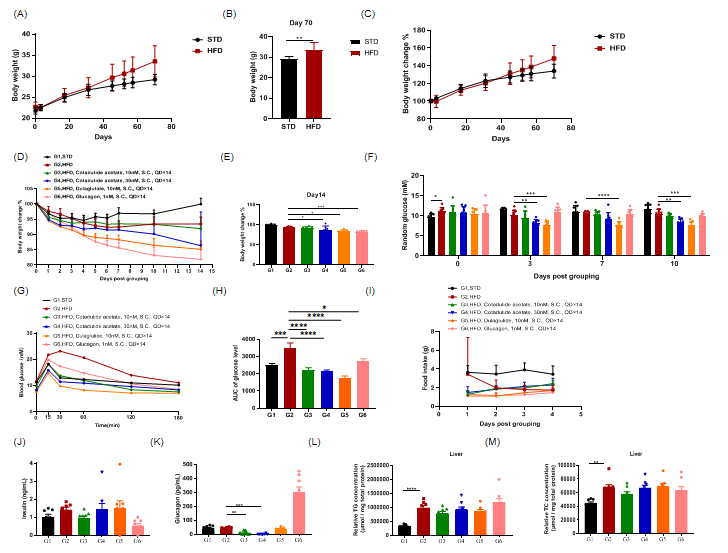
In vivo efficacy of cotadutide on B-hGLP1R/hGCGR mice DIO model. (A,C) Body weight and its’ change from baseline (%) during HFD induced. (B) Body weight before grouping. (D) Body weight change in grouping day and (E) experiment endpoint. (F) Random blood glucose on day 0, 3, 7, 10 after grouping. (G) Blood glucose profile following intraperitoneal injection of 1.25 g/kg glucose on day 12 after dosing. (H) Area under the IPGTT curve. (I) Cumulative food intake over the first 4 day of dosing. (J) Plasma insulin, (K) glucagon,(L) TG (triglycerides) and TC (cholesterol) level of liver on 20 hours after administration of the final dose. As shown in the panel, mouse body weight has increased under a high-fat diet. Following dosing with reagents in the panel, body weight and random blood glucose have reduced in the 30nM cotadutide treatment group but not obviously in the 10nM cotadutide group. During intraperitoneal glucose tolerance test (IPGTT), cotadutide reduced blood glucose. Whereas food intake has no differences among groups, and cotadutide shows a trend in reducing TG and TC level of liver in 10nM dose without statistical differences. As well as, the plasma insulin and glucagon show decreases trends. (ANOVA results, *:P<0.05,**:P<0.01, ***:P<0.001, ****:P<0.0001)







